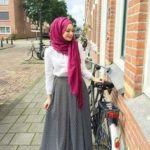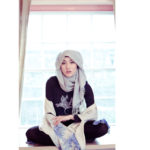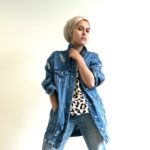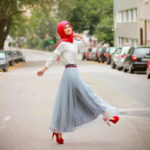2016 saw the quintessential Italian brand D&G leave their modern and sensuous silhouettes behind and opt for something more modest. The Abaya collection they call it, as designed to create waves. Catering to the Islamic requirements of loose-fitting clothing, the collection featured flowing, full-length dresses with long sleeves as well as headscarves – a striking image from a global fashion brand at a time where suspicion and hatred of Muslims is on the rise.
D&G is the latest of several major fashion labels to have recently created clothing for Muslims. DKNY, Tommy Hilfiger and Oscar de la Renta have also produced a clothing line targeting the Muslim market, while H&M featured a hijab-wearing model in one of its 2015 advert campaigns.
As a strongly politicized sign of religious identity, the hijab has been subject to a complex debate in recent years, with some viewing it as a feminist symbol of liberation, while others disdain it as a symbol of oppression. Many Westerners believe that traditional Muslim dress—and the vague category of “the veil”—is a sign of male oppression and backwardness. Freedom, we are told, is all about heels and lipstick. But the phenomenon of modern Muslim women testing out adventurous new styles on fashion blogs has proven quite different.
The move by H&M, GBBO and others normalizes the image of a woman in a hijab within areas that people wouldn’t normally associate with Muslim women. Hussain is not just a woman in a headscarf, she’s a darn good baker. Idrissi isn’t just another “hijabi”, she’s a woman who confidently blends faith with fashion. This re-frames the debate, creating parameters which allow Muslim life and culture to be discussed in diverse, healthy and holistic ways, instead of our experiences being represented by negative, reductionist headlines.
Rise of the Hijab Bloggers :
The Internet and the rise of the Hijab wearing bloggers has made hijab fashion visible, it has also proven that hijab can be eclectic. Some hijab fashion bloggers will often wear bold hues of lipstick with smoky eyes and curled lashes, while others prefer a more minimal look. Some of them will wear skinny jeans and heels but, like Yaz the Spaz, they will mix in tops that run down to the mid-thigh area, or choose vibrant palazzo pants with crisp blazers and gorgeous, colorful prints. Others, like Dina Torkia, often wear loose trousers, emphasizing clashing prints, tomboy laid-back ensembles, vintage finds, and lavish jewelry. Sometimes hijab will be wrapped in the likes of a chic Poiret-style turban, while other times it will pop out because of its bright color or bold pattern. Hana from Stylecovered, for instance, will translate the collection of her multiple cultural background into her ensembles: Japanese-inspired silhouettes with high-end British sophistication and urban edge.
Critics argue that the range rather looks like an appropriation of existing traditions without giving them any real recognition.But amidst all controversies, I personally think the Hijab is a developing product category that stands for more than just religion. I hope it will render Muslim women less “them” and more “us” and will promote a shift from a minority complex to a majority mindset.







